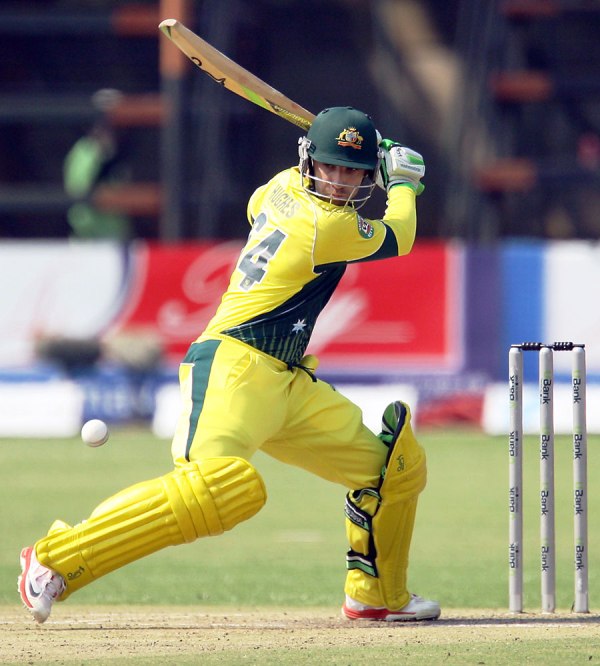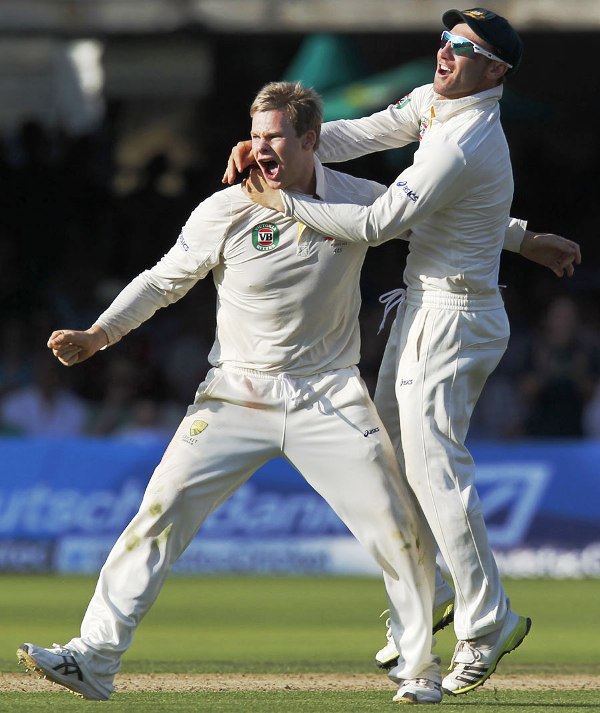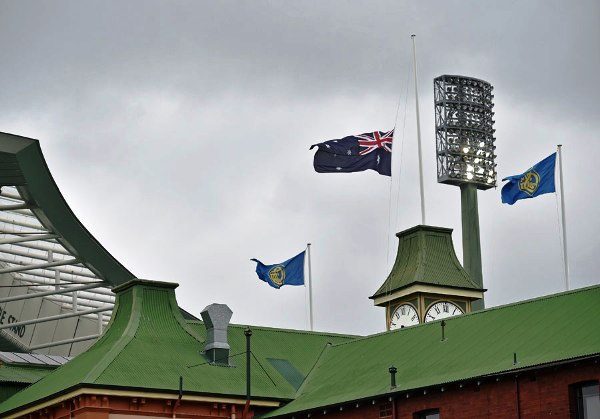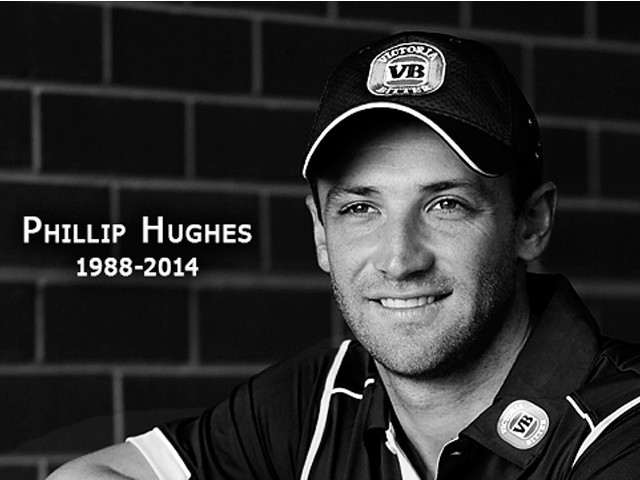At the age of 20, this miraculous country-side batsman made his way into the Australian Test side against South Africa at Johannesburg back in 2009. His very first fall in Test cricket on nought was on a bouncer bowled by Dale Steyn which he, in pursuit of slashing it over the slips, edged to Mark Boucher. South Africa thought they had found the weakness in the newbie’s defence and presented him with some more in the second innings, but he pushed his way through the venom of Steyn, Morne Morkel and Makhaya Ntini and scored 75 runs.
The talented, short-heighted, left-hand batsman was not flabbergasted by the acrimonious welcome to Test cricket and instead he took the challenges head on.
“I love it. I love them to come hard at me,” said Hughes after making 75 in the second innings of his debut.
“I’m only a short left-hand opening batsman. They like to come in pretty hard but I love that challenge.”
 Phillip Hughes loads up for the cut, Zimbabwe v Australia, tri-series, Harare, August 31, 2014. Photo: AFP
Phillip Hughes loads up for the cut, Zimbabwe v Australia, tri-series, Harare, August 31, 2014. Photo: AFPHe carried the confidence with him in the second Durban Test when Proteas bowlers again pitched it short for him but he scored a century in the first innings to become the youngest Test centurion, beating great Sir Don Bradman’s feat. But that was not it; he battered the South Africans in the second innings as well, scoring 160 runs to become the youngest batsman to score centuries in two innings.
The performance helped him pave his way into the squad for the 2009 Ashes series but he was not able to make a mark and was accounted by Andrew Flintoff on three occasions out of four in the first two Tests. He was dropped for the last three Tests and Shane Watson was pushed up the batting order to open with Simon Katich.
 Phillip Hughes embraces Steve Smith after another wicket falls, England v Australia, 2nd Investec Ashes Test, Lord's, 1st day, July 18, 2013. Photo: AFP
Phillip Hughes embraces Steve Smith after another wicket falls, England v Australia, 2nd Investec Ashes Test, Lord's, 1st day, July 18, 2013. Photo: AFPConsidered a backup opener for a year or so, Hughes led the kangaroos to a victory over New Zealand in the first 2009 Test with an 86 up the order, chasing a target of 106 at Wellington in the absence of Katich. He made another comeback for the 2010-2011 Ashes to accompany Watson for the last three Tests after Katich went out with an injury. He failed again, compiling only 97 runs in six innings but he ended his Sheffield Shield season on a high that year to become the selector’s first choice after Katich lost his contract.
He scored his third Test century against Sri Lanka in 2011 but was dropped again after another vehement performance against New Zealand. He was brought back into the team in 2012-2013 against Sri Lanka but in the following series against India, like all Australians, he failed against the spin. His last appearance for the Australians was against England in the Ashes series that year, where he scored an unbeaten 81 in the first innings of the first Test at number six. He was out for a nought in the second innings and in the next Test, he batted at number four and scored two ones in both the innings.
 Phillip Hughes raises his bat after scoring a century during the fourth day of their third and final cricket match against Sri Lanka in Colombo September 19, 2011. Photo: Reuters
Phillip Hughes raises his bat after scoring a century during the fourth day of their third and final cricket match against Sri Lanka in Colombo September 19, 2011. Photo: ReutersHughes started his career facing the short-pitched stuff from the tall quickies of South Africa and ended his career with one from his compatriot, but this time he was not able to make a bounce back from the clutches of death and closed the chapter of his life, once again staring death right into its eyes.
With his flamboyant technique and impulsive shot making, he was meant for things greater than he had already achieved. His cover dives packed with intent and authority were a sight of their own class. With a demeaned height, he would play the fast bowlers with such exuberance that an unintentional cheer roared through the crowd to honour his skills. He was a determined batsman who would always make a comeback after a bad patch. He would always struggle and fight the odds. He had a habit of coming back again and again.
The world will always remember his batting skills and his humble presence on the cricketing ground. Michael Clarke read a letter from Hughes’s family at a press conference and I would like to end this tribute to him with the same words as in the letter,
“We love you.”
 The Australian flag flies at half mast at the Sydney Cricket Ground, following the death of Phillip Hughes, November 27, 2014. Photo: AFP
The Australian flag flies at half mast at the Sydney Cricket Ground, following the death of Phillip Hughes, November 27, 2014. Photo: AFP


COMMENTS
Comments are moderated and generally will be posted if they are on-topic and not abusive.
For more information, please see our Comments FAQ